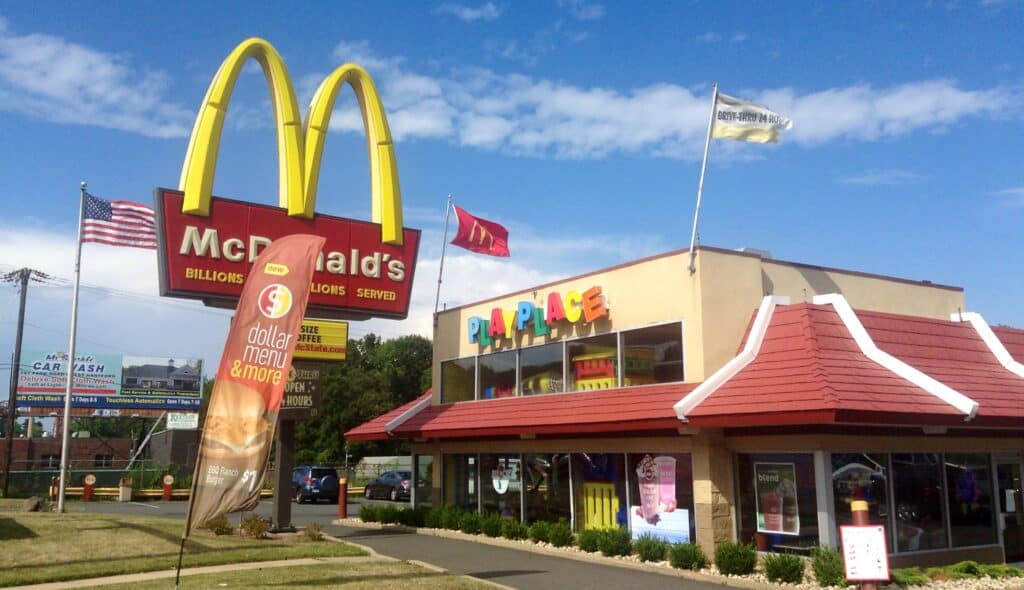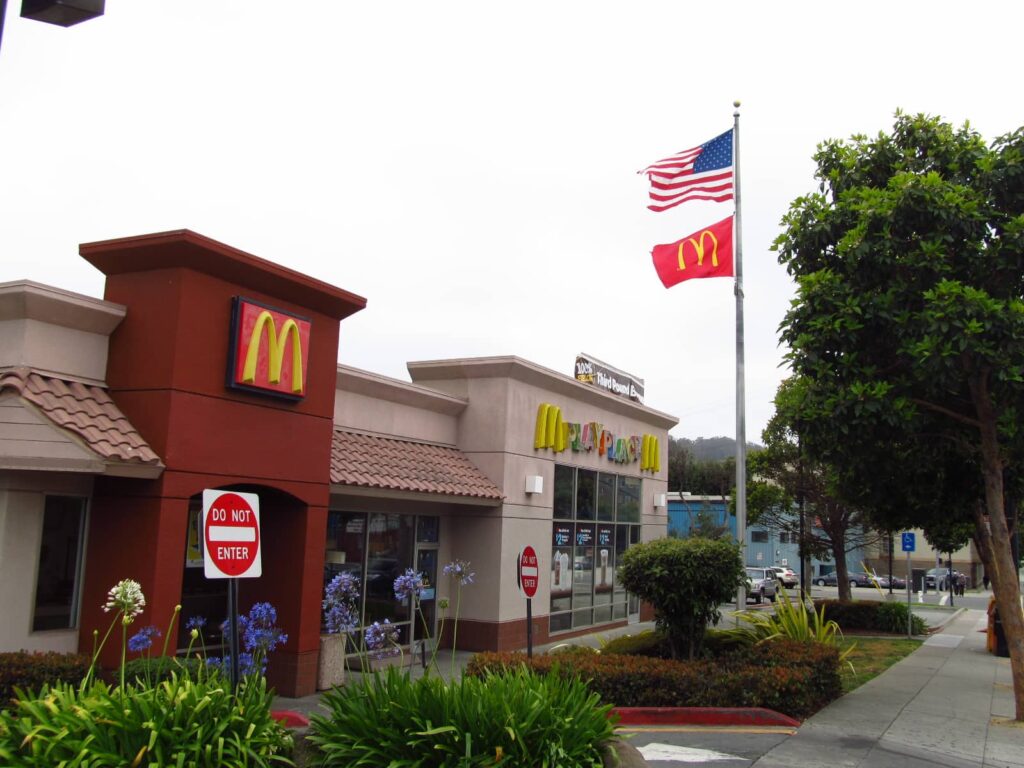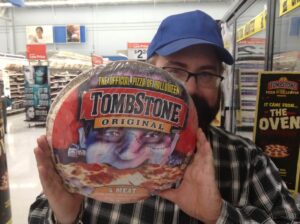I recently noticed that they had torn down the PlayPlace at a McDonald’s location near me, but had no clue as to why they did it — until now. Keep reading to find out why this and other PlayPlaces have been disappearing lately.
The History of the McDonald’s PlayPlace

The McDonald’s PlayPlace debuted in 1972 as a branding effort. The first McDonald’s PlayLand brought a 34 percent increase in business to its location. This was before the park was even completed. That number rose to 63 percent over subsequent months.
The original playgrounds “revolved around an Illinois State Fair exhibit called ‘McDonaldland,’ which featured McDonald’s-branded characters like Officer Big Mac, the Hamburglar, and Mayor McCheese,” according to an article published by Reader’s Digest.
The playgrounds were originally outdoors and were designed for individual rather than interactive play, but by the time the 90s rolled around, indoor playgrounds were all the rage. That’s likely due to the fact that around the same time some cities were cutting funding for public playgrounds and some school districts were doing away with playgrounds because of injuries and lawsuits. Needless to say, parents were thrilled with the idea of an indoor play area where kids could get in plenty of exercise and be safe from injury (the playgrounds were protected by thick padding, fabric, and nets) as well as kidnappers. It seemed as though the fast food playground was here to stay. Unfortunately, it turned out to be the exact opposite.
FUN FACT: If you’ve been paying attention, you’ve probably noticed that the PlayPlaces aren’t the only things that started disappearing. Mayor McCheese, Officer Big Mac, and other McDonald’s characters disappeared too. That’s because the creators of H.R. Pufnstuf, a television series that aired in 1969, sued McDonald’s over its characters because they seemed quite similar to the characters on H.R. Pufnstuf.
Although McDonald’s admitted to being inspired by H.R. Pufnstuf, the company denies stealing their ideas. Unfortunately for them, the courts disagreed, and McDonald’s was found guilty of copyright infringement and was ordered to pay more than $1 million to the show’s creators. They were also ordered to stop using some of the McDonaldland characters.
Health and Safety Concerns

One of the reasons for the disappearing PlayPlaces is that they’re not clean. In fact, they’re downright filthy. And, if it weren’t for Dr. Erin Carr-Jordan, a mother of four and a child development professor at Arizona State University, we probably would have never known just how filthy PlayPlaces are. In 2011, Dr. Carr-Jordan decided to follow one of her kids into the slide at a PlayPlace in a Tempe, AZ. Inside she found a used bandage, rotting food, and profane graffiti.
And, that’s not all. Dr. Carr-Jordan also took bacterial swabs at different fast-food establishments across the country and found evidence of potentially dangerous pathogens ranging from fecal coliforms to several strains of Staphylococcus and everything in between. In other incidences, children have found needles, a plunger, burnt foil, poop, a used condom (one child picked it up and ate it), and a hedgehog! Surprisingly, there are few federal and state regulations regarding fast food playground cleanliness. In fact, when Dr. Carr-Jordan started her research, there was virtually no federal or state legislation governing fast-food playground cleanliness standards.
But, it wasn’t just the germs that had folks worried. It was the injuries as well. According to Southern Living magazine, McDonald’s had reportedly been covering up a large number of injuries sustained on the Big Mac Climber. Children would frequently fall from the equipment, but the fast food giant didn’t discontinue it until 1997. And, it wouldn’t be until two years later that we would discover that more than 400 kids sustained injuries after playing on the Big Mac Climber between the 1970s and 1990s. Those injuries included broken bones, concussions, and skull fractions. After McDonald’s got rid of the last Big Mac Climber, the U.S. Consumer Product Safety Commission (CPSC) started investigating PlayLands due to lawsuits and consumer complaints. When it was all said and done, McDonald’s ended up paying out $4 million in fees to the federal government.
FUN FACT: Some years ago, McDonald’s considered replacing play areas in thousands of its restaurants with kids’ gyms. This move was in response to the childhood obesity epidemic and would give the kids a way to burn off their Happy Meals. The gyms would offer sports-oriented activities like stationary exercise bikes, rope climbing and other aerobic activities for children up to 12 years old, and would be divided into the following age-specific activity zones:
-The toddler zone, for children up to age 3, would offer a place where they could climb, play with soft balls, or go sliding. -The active zone, for kids ages 4 to 8, would feature climbing challenges, aerobics, balancing, an obstacle course, and a slalom challenge.
-The sport zone, for kids 9 to 12 years old, would offer areas for jumping, dancing, and bike riding over interactive mountain trails.
Technology Takes Over

We live in the digital age, so it makes sense that kids are less interested in playgrounds and more interested in iPads, video games, and such. The lack of attention the PlayPlaces have been getting made the cost of maintaining them not such a worthwhile option.
That’s why when new McDonald’s locations are opened, the PlayPlaces aren’t included. Since this is the case, McDonald’s is putting its funds elsewhere. The fast food giant decided to move ahead with its “Experience of the Future” initiative, which includes easy-to-use ordering kiosks that let you browse the menu at leisure and take your time placing your order, striking decor, free-to-use tablets, smartphone charging stations, and free Wi-Fi.
Don’t worry, though. You can still find locations with indoor and outdoor playgrounds by using the McDonald’s online restaurant locator. In fact, WFMZ-TV 69 reported last year that a new McDonald’s that was being built for the Philadelphia region would include an indoor PlayPlace. It would be the first-ever indoor PlayPlace in Berks County, PA.
So as you can see, indoor playgrounds aren’t likely to disappear entirely. They could, however, eventually end up being replaced “with interactive iPad playparks,” Mashed.com said on its website. “Playgrounds furnished with electronics in fast food chains might not encourage active play or exercise, but at least are unlikely to cause any broken bones — and can be easily wiped down by a sanitizing wipe.”
CONCLUSION
Would you be happy with an interactive iPad playpark or something similar? Let us know in the comments below. Thanks for reading!



